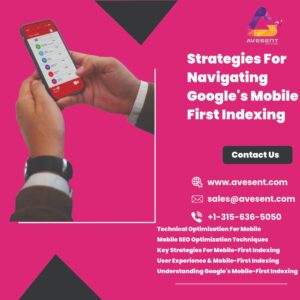In the realm of digital marketing, the integration of augmented reality (AR) into graphic design has emerged as a powerful strategy for enhancing user engagement, driving brand innovation, and delivering immersive experiences. Digital marketing agencies in India are leveraging AR to create captivating campaigns that bridge the gap between the physical and digital worlds, thereby redefining consumer interactions. Here are some strategies to effectively integrate AR into graphic design:
Understanding Augmented Reality:
Conceptual Foundation: AR overlays digital elements onto the real world, offering interactive and immersive experiences.
Enhanced Engagement: By superimposing virtual content onto physical surroundings, AR enhances user engagement.
Identifying Design Objectives:
Brand Storytelling: Develop AR experiences aligned with the brand narrative to captivate and inform users.
Interactive Product Visualization: Use AR to allow customers to visualize products in their environment before purchase.
Designing AR Elements:
Visual Appeal: Create visually appealing and contextually relevant AR elements to engage users effectively.
Simplicity and Clarity: Ensure intuitive and easy-to-use AR interfaces for a seamless user experience.
Utilizing AR in Marketing Collateral:
Interactive Print Collaterals: Incorporate AR into brochures, flyers, or business cards for an interactive experience.
Enhanced Packaging: Create packaging designs with AR-enabled features that engage customers post-purchase.
AR in Social Media Campaigns:
AR Filters and Lenses: Develop custom AR filters or lenses for platforms like Instagram or Snapchat to drive user-generated content.
Interactive Posts: Integrate AR into social media posts to create engaging and shareable content.
Gamification and AR:
Branded Games and Experiences: Develop gamified experiences using AR to boost user interaction and brand recall.
AR-Based Contests and Challenges: Engage audiences through interactive challenges using AR elements.
Educational and Informational Content:
Product Demonstrations: Use AR to showcase product functionalities or assembly instructions interactively.
AR-based Tutorials and Guides: Create instructional AR content for enhanced learning experiences.
Measuring AR Impact:
User Engagement Metrics: Track metrics like interaction time, shares, and interactions with AR elements.
Conversion Tracking: Measure conversions influenced by AR campaigns to gauge their effectiveness.
Collaboration with Digital Marketing Agencies:
Expertise in AR Integration: Collaborate with specialized digital marketing agencies in India with AR expertise for seamless integration.
Holistic Campaign Planning: Partnering with agencies can ensure a holistic approach, aligning AR strategies with broader marketing objectives.
Staying Ahead with Innovation:
Exploring New Technologies: Stay updated on emerging AR technologies to innovate and remain competitive in the market.
Adaptable Strategies: Flexibility to adapt AR strategies based on audience feedback and technological advancements.
In conclusion, the integration of augmented reality into graphic design offers a transformative approach for digital marketing agencies in India, providing unique and immersive experiences that resonate with modern consumers. By leveraging AR strategically in their campaigns, these agencies can redefine user interactions, drive engagement, and elevate brand experiences in the ever-evolving digital landscape.




